Nearly every article I can find comparing coffee grinders using conical burrs versus flat burrs brings up that conical burrs create a bimodal distribution of grounds, while flat burrs have a unimodal distribution. Despite the ubiquity of this claim, evidence as to whether or not it is true seems hard to find, and explanations for the science behind it are simply non-existent.
(If you don’t know what I’m referring to, check any of these: 1, 2, 3, 4, 5, or google “conical vs flat burrs” for more examples.)
Because the answers to my questions seem so hard to find, I’m hoping to increase accessibility of this information, and hopefully push the conversation forward as to what burr design actually means for those who are looking to have control over their coffee grind.
A Quick Summary: What are unimodal versus bimodal grind distributions?
Without going into too much detail, the process of making coffee could be described as trying to use water to extract flavor (and compounds, like caffeine) from coffee beans. In order to change the effectiveness (and resulting flavor) of our extraction, there are a few factors we can change, such as:
- The length of time the water and coffee touch
- The temperature of the water (hot water extracts better)
- The amount of coffee
- The amount of surface area that the water and coffee can touch
The last bullet is accomplished by grinding coffee beans down, so that the area once inside the bean is now directly exposed to the water.

Because coffee can be “over-extracted” (that is, extracting too long brings out bitter flavors), we need to balance all of the variables mentioned above (and more) with the size of the coffee grounds in order to have a flavorful extraction.
Getting consistency with your grind size can be a difficult, opaque process though — the resulting grounds are never all the same size. There’s always a range of particle sizes coming out of your grinder. One might assume that grinders output a normal distribution of grind size — that is to say that most of coffee grounds are some average size, with some grounds being either a bit bigger or smaller.

Beyond this being a normal distribution, or a bell curve, you could also call it unimodal. Literally, having one mode, as in the “mode” from your statistics 101 class (mode: the value that appears most often in a set of data values). Visually, this is easy to tell since the graph has one peak.
In contrast, a bimodal distribution has two peaks, where there are two “modes,” or two recurring values. For the sake of coffee brewing, this means that for any given set of other parameters (consistent water quantity, temperature, etc), you will be producing two sets of predominate flavors, one for each of the two modes of the grind distribution.
Depending on what you are trying to accomplish, this could be good or bad. In some brews, a barista might be looking for “complexity” — bimodal grind distributions should literally cause more than one flavor profile, and could be considered more complex.
However, while trying to hone in on one particular flavor, you may find another one of the grind sizes is being over or under extracted, and not producing the flavor that you are looking for. In order to have a better control over your flavor profile, it makes sense to want to produce a single grind size.
Now the question is — what is actually happening in these grinders so that you can get a single grind size?
Why would a bimodal distribution even exist?
Normal distributions are the natural state of most things. If you were to sample a population randomly and ask about their age, height, weight, etc, you would find that the resultant graph is a normal distribution. This type of distribution is “normally” what happens.
So the sheer fact that coffee grinders can produce a bimodal distribution should pique your interest. What might be at play that is causing this?
The leading hypothesis I have found from my research is that the secondary distribution is caused by coffee “fines.”
One home-barista.com forum user describes it well:
If anyone can snap a cracker into two parts without any crumbs, I’ll buy the claims for unimodal grinders
This hypothesis makes sense to me — in trying to break a coffee bean into something smaller, each snap results in very fine particle dust and two somewhat similarly sized halves of the bean.
As far as I can tell, this is scientifically backed as a behavior of “imperfect solids.” Most objects don’t cleanly break into only two pieces; they crack and crumble a bit. Simulations exist for brittle fracturing, (such as this UPenn paper) where it is modellable and computable how items break unevenly.

Conceptually, this bimodal distribution would have two peaks representing two events — one bell curve for the main bean grinding, and a secondary bell curve for the fine grounds.
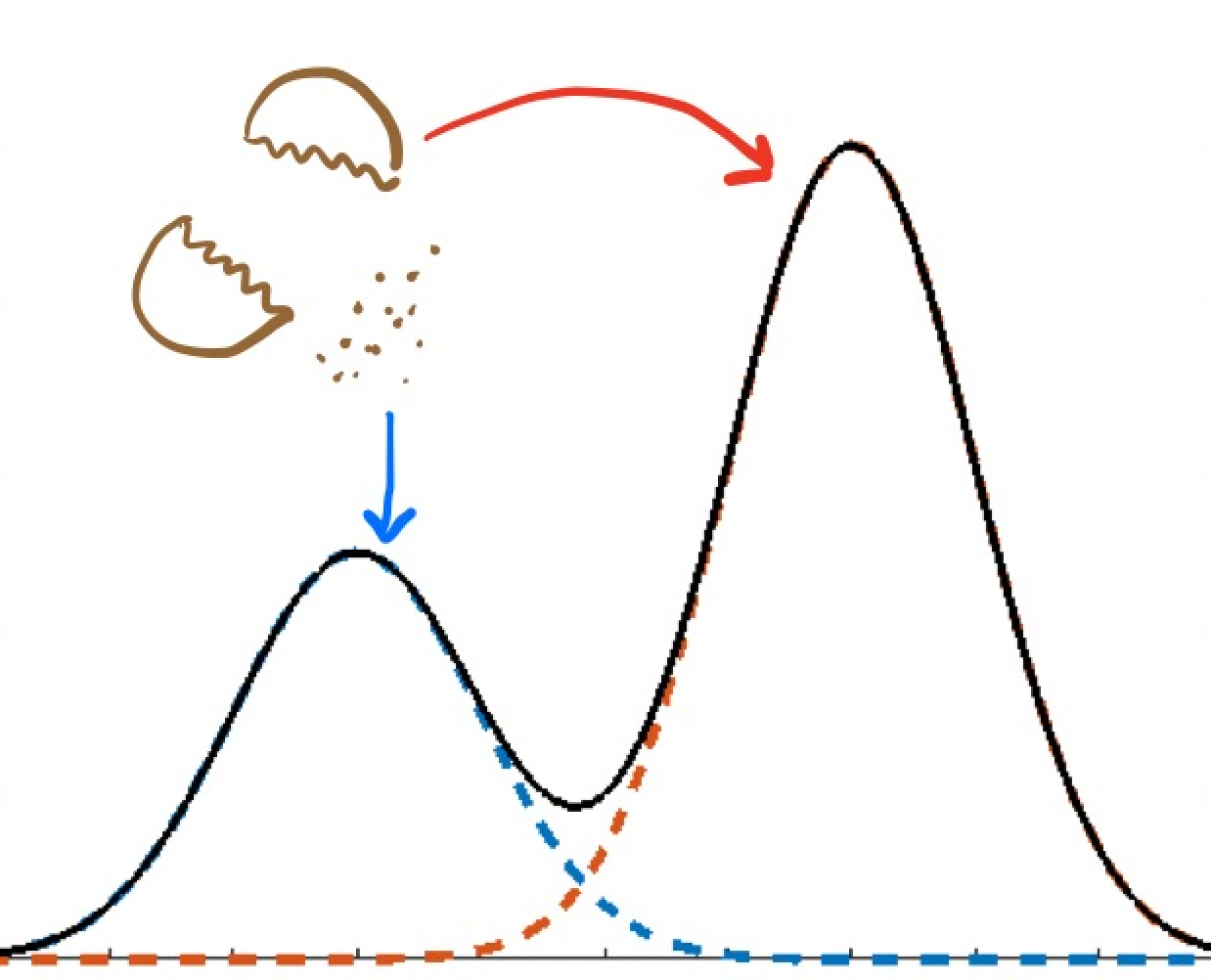
How could burr type impact the grind distribution?
Most popular internet articles imply that the inherent nature of the burr design impacts the grind distribution. As far as I can tell, this is not true. If it is true, I can find no evidence of why. My hypothesis is that burr design correlates with how product designers choose to build their overall grinder, but that ultimately the orientation of the grinder either allows or prevents gravity from expelling all of the coffee grounds.
I don’t think burr design causes differences in grind distribution, but it is correlated. Instead, I think the simpler explanation is that in unimodal grind distributions, the fines don’t appear in the measured output because they are just stuck in the grinder.

Typically, the above diagram represents how coffee exits the burrs. Notice that in a conical burr, gravity does the work. In theory, this should mean that there is minimal retention; the fine particles should not be trapped because nearly everything falls through the burrs. However with flat burrs, small fines can be trapped in the blades, and gravity will allow them to rest on the burrs instead of falling into your dosing cup.
Interestingly, this starts to venture into another buzzword of coffee making: “zero retention” grinders. In theory, premium grinders retain almost no coffee grounds, yet many of them are also flat burred grinders — how do they do it?
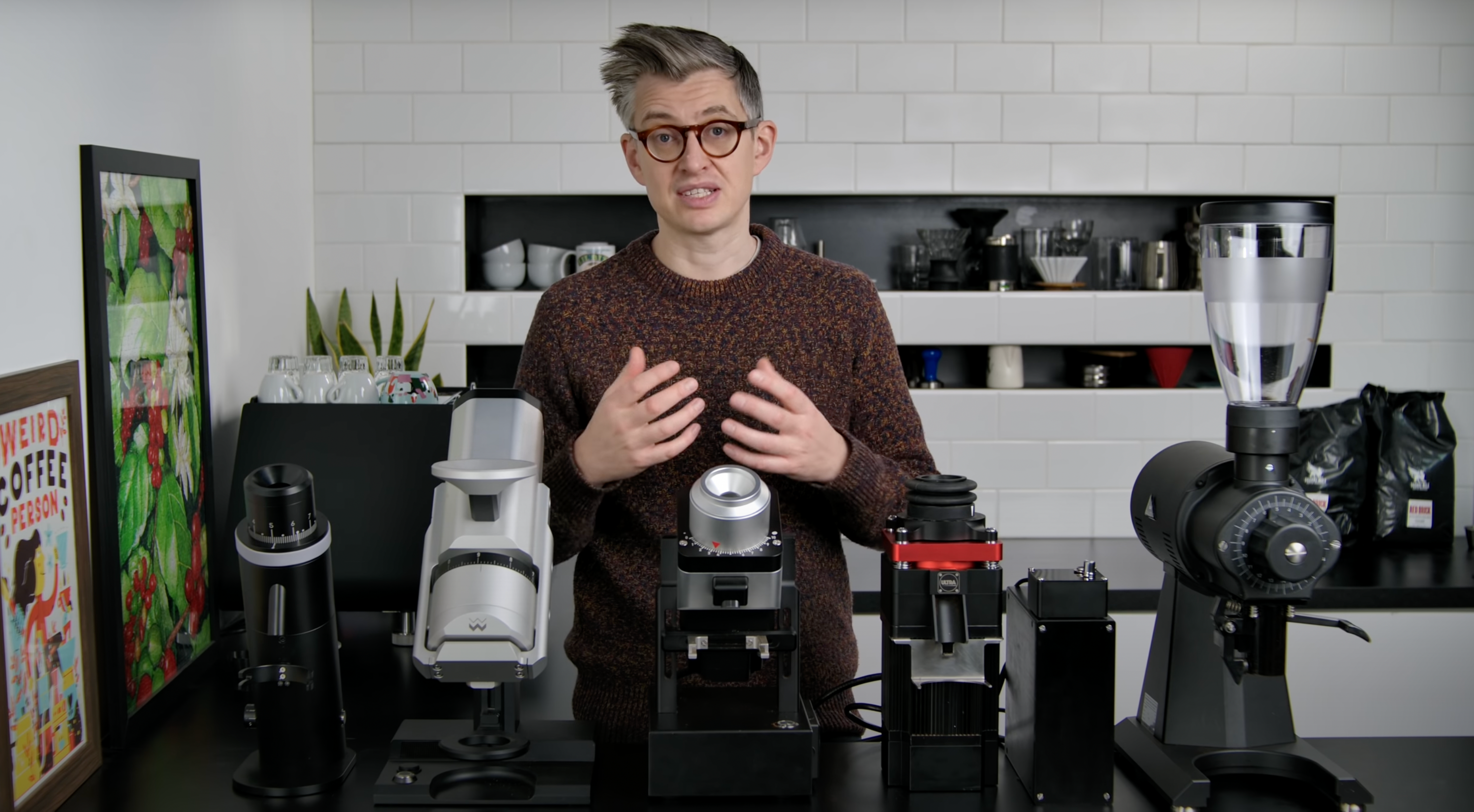
The answer is unglamorously simple — they just tilt the flat burrs so gravity can still help the particles fall out.
That said, there are more grooves in most flat burrs, so conceptually there should be more places for fine particles to get stuck and be retained anyway.
Will tilted flat burrs have unimodal distributions?
To be honest, it’s very hard to tell. I can find very little concrete data from grind experiments, and do not have the equipment to do so myself. I’m left to analyze based on what information I can find.
Using data from the Lagom P64 as an example, which is a premium, tilted flat burr grinder that claims “zero retention,” it appears that the distribution is mostly unimodal, with a clear peak between 200-400 microns. Nonetheless, even in a bespoke $1500 grinder, we still see a small localized maximum at less than 200 microns — aka, the fines.
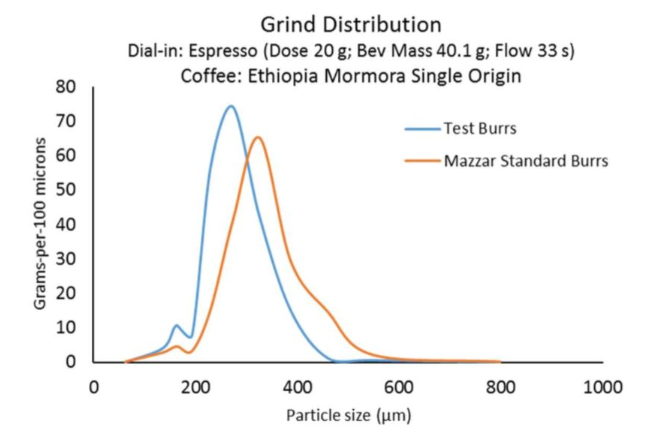
In contrast, looking at data from Baratza for their conical burred Preciso (a model that seems to now be unavailable, but was once $300), the bimodal distribution seems much more present.
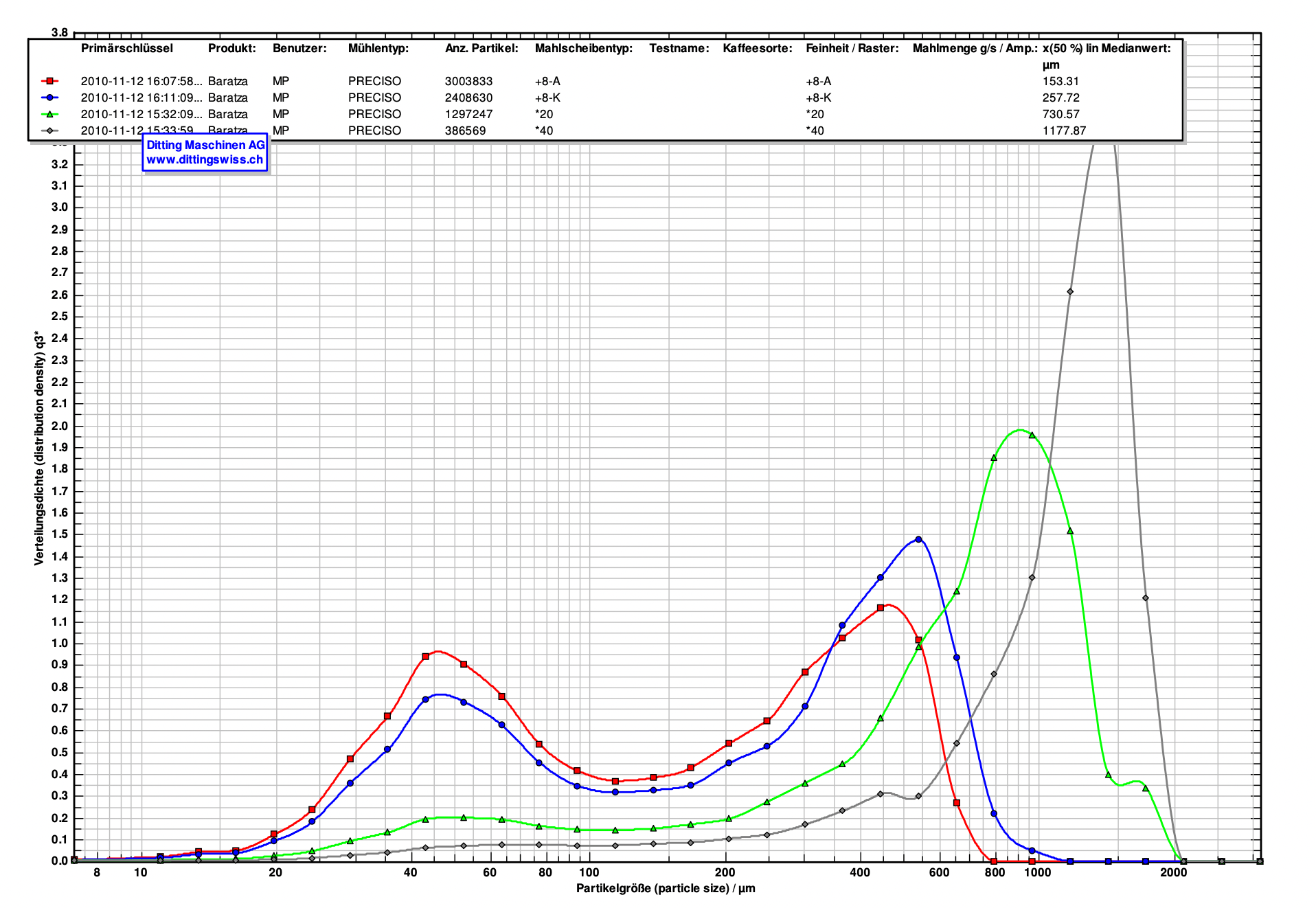
While this is perhaps an argument in favor of the flat/conical vs uni/bi-modal framework, there are so many other factors at play. Two of which I suspect might are most important here are:
- The Preciso is cheaper, and likely has less focus on burr alignment (because if they did, it would drive up the price)
- The peaks on the Preciso’s distributions suggests that they are attempting to have a grind size upwards of 400 microns, meaning the burr’s opening was wider and could more easily allow larger particles to fall out.
What other factors beyond burr design might cause grind inconsistency?
It seems reasonable that burr alignment is likely one of the bigger factors that would impact grind distribution, as opposed to actual design of the burr.
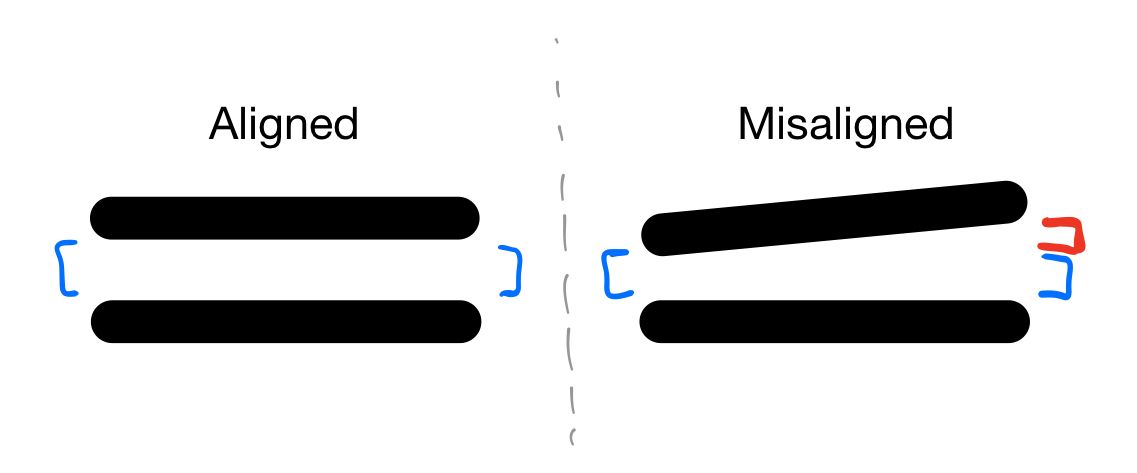
I see other analyses suggesting similar ideas, such as those done by Coffee Technicians Guild that highlight “outfall depth,” which they essentially define to be the gap between the teeth of the burrs.
Flat burrs have a different geometry than conical burrs, […] the main focus here being the outfall depth. The outfall depth is the size of the hole created on the side of the burr when the tertiary cuts are aligned. The larger the outfall depth, the faster the burr will grind and the less consistent the particle distribution will be. That being said, the outfall depth of a flat burr is generally smaller than the outfall of a conical burr. This means that the ratio of fines to boulders is much closer together than it would be for a conical burr. As a result, at a macro level, flat burrs create a more uniform particle size than conical burrs.
To me, the key observation here is that “the outfall depth of a flat burr is generally smaller than the outfall of a conical burr.” Perhaps this is true, but I see no reason why this has to be the case — being able to have precisely aligned and narrowly spaced burrs shouldn’t change because of conical or flat designs. Instead, this is a manufacturing challenge (one that perhaps justifies purchasing a premium grinder of either design type).
What can I do to improve grind consistency?
Until I see more concrete and consistent data around grind distribution, I find it very hard to believe that burr design inherently creates consistency.
The most reasonable explanation for the results that I can find demonstrating highly consistent output would be that the burrs are well aligned and are being used to create a fine grind. As mentioned, one way to obtain this is to purchase a premium grinder.
Another, bolder option is to open up your grinder and try to align the burrs yourself. This may only prove to be mildly successful though, as some of the mechanisms holding the actual burrs in place may not be secure enough to maintain your perfect alignment.
In some sense, I think there’s an alternative way to think about this problem. If your end goal is just to end up with a consistent grind, the simplest option is to just past your grounds through a sieve. Instead of worrying about your grinder having optimal results, it would be much easier to filter out your grounds for only the particles of your desired size.
Admittedly, this option could end up being wasteful if you choose to discard the grounds that are too coarse or too fine. Alternatively though, you could opt to use these grinds for other purposes like pour over (coarse) or Turkish coffee (fine).
Or… you could throw them away! It’s probably a small enough quantity that it’s not worth worrying about too much.
For commercial usage, this could be a bigger problem, not only due to the volume of fine waste, but because sieving coffee grounds likely would take too much time. Perhaps a lack of knowledge on my end, but I have yet to see an automatic, professional-grade sieve, so there’s no immediate answer.
I believe one could exist though. Some form of automatic, variable sieve created from the intersection of two standard sieves is plausible; some high end grinder could include this in their device so that you could electronically pick a grind size, and the grinder could set the burrs and sieve the result to get you exactly what you wanted.
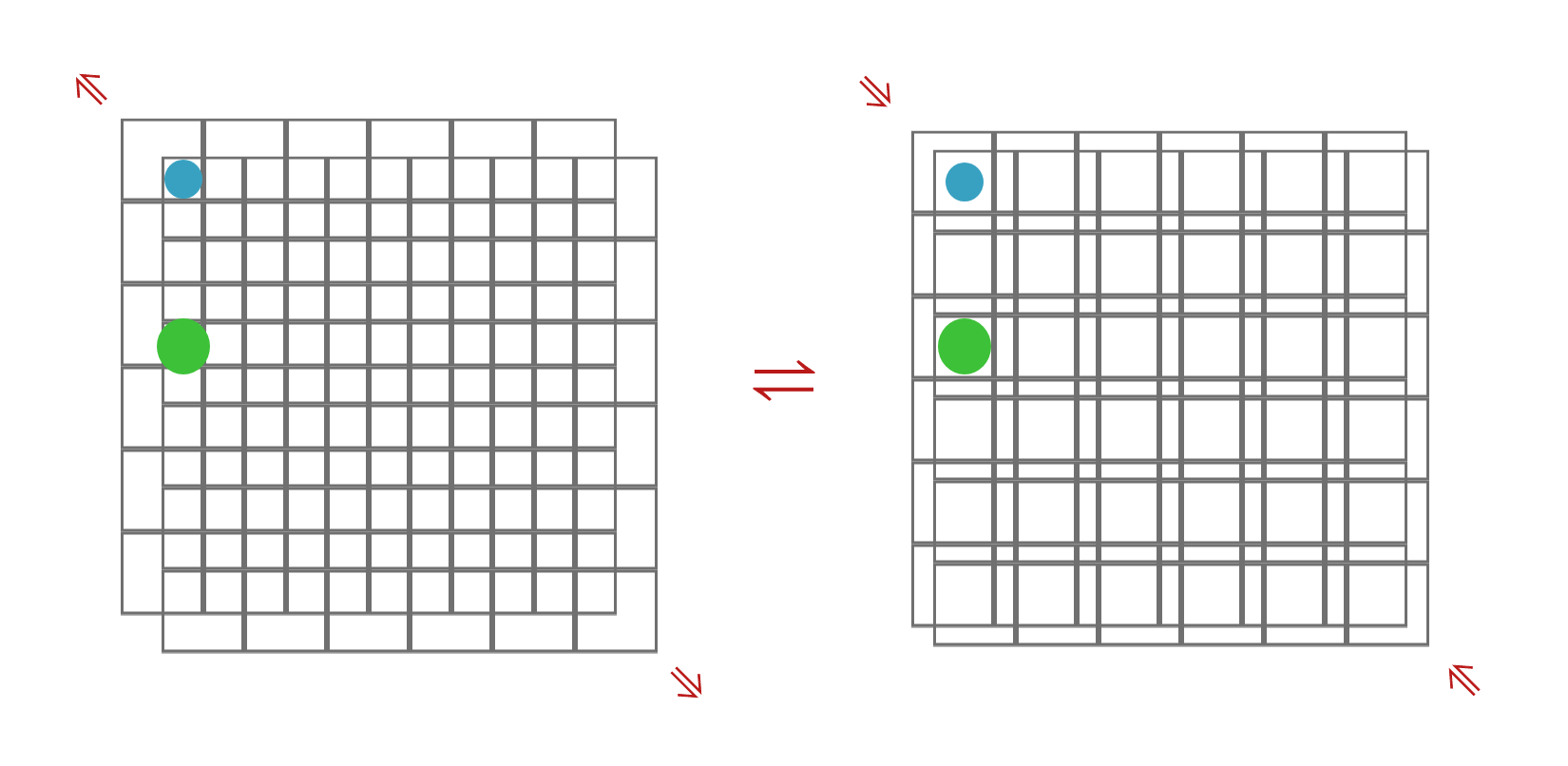
Until then, home baristas can still rejoice that sifting grinds by hand isn’t too hard, and can consistently provide a unimodal distribution they seek at a reasonable price point.
If you have any comments or ideas on how to improve this article, please let me know via Twitter or email.
